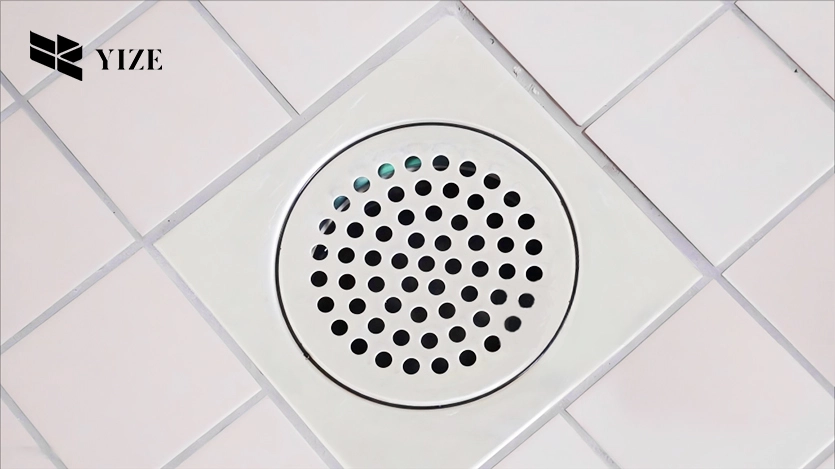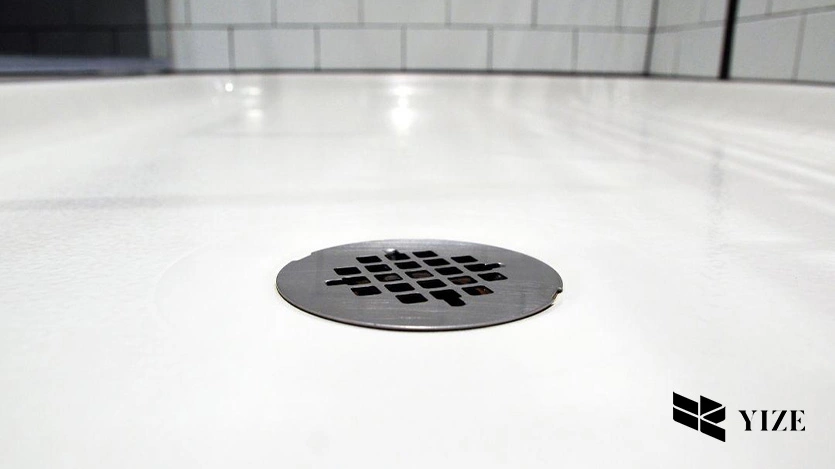
You’re about to drop $50,000 on shower drains for your next project. Choose wrong, and you’ll be back in six months dealing with warranty claims and angry clients.
The truth? Most procurement teams focus on the wrong metrics. They chase the lowest price or the shiniest features, missing the sweet spot where value actually lives. Smart buyers know it’s not about finding the cheapest drain or the most expensive one — it’s about matching quality to your specific needs.
Here’s what we’ll cover:
- How to calculate the real cost of drain systems over 10 years
- Quick quality tests that separate professional-grade from junk
- Budget allocation strategies that protect your bottom line
- When to splurge vs. when to save on drain components
- Hidden costs that triple your actual investment
We’ve learned these lessons working with YZDRAIN over the years. Our approach to balancing manufacturing costs with quality standards has taught us what actually matters in procurement decisions.
I. How to Calculate the Real Cost of Drain Systems Over 10 Years
Forget the sticker price. Your drain’s true cost reveals itself over a decade of use.
The Total Cost of Ownership (TCO) formula breaks down like this:
Initial Cost + Installation + Maintenance + Replacements + Downtime = Real Cost
Let’s say you’re choosing between two options:
- Option A: $30 drain with basic ABS construction
- Option B: $85 drain with stainless steel and WATERMARK certification
Run the numbers over 10 years, and watch what happens.
1. The Hidden Money Pit
That $30 drain? It’ll need replacing every 3-4 years. Add installation costs ($150 each time), and you’re looking at $780 just for replacements. Toss in quarterly maintenance calls ($75 each) because cheaper drains clog more often, and you’ve burned through another $3,000.
Meanwhile, the $85 drain runs for the full decade with minimal fuss. Annual inspection? Maybe $50. Total 10-year cost: $585.
Pro tip: Calculate downtime costs too. Every shower out of commission costs hotels $200-500 per day in lost revenue and comp upgrades.
2. Quick TCO Calculator
| Cost Factor | Budget Drain | Quality Drain |
| Initial Purchase | $30 | $85 |
| Installation (3x vs 1x) | $450 | $150 |
| Maintenance (10 years) | $3,000 | $500 |
| Replacement Parts | $300 | $0 |
| Total TCO | $3,780 | $735 |
We’ve seen contractors switch to 360° rotatable-outlet drains specifically because they cut installation time by 40%. When you’re paying plumbers $150/hour, those saved minutes add up fast.
The math doesn’t lie. Quality pays for itself five times over.
II. Quick Quality Tests That Separate Professional-Grade from Junk

You’ve got 30 seconds to judge a drain’s quality. Here’s exactly what to check.
1. The Magnet Test
Slap a magnet on that “stainless steel” grate. No stick? That’s 304-grade stainless — the good stuff. Strong attraction means cheap steel that’ll rust within two years.
2. Weight Tells the Truth
Professional drains feel substantial. Pick up a quality shower drain likeYZDRAIN’s horizontal-outlet models, and you’ll notice the difference. Flimsy drains under 1.5 pounds? They’ll crack under normal bathroom traffic.
3. The Certification Hunt
Look for these marks or walk away:
- WATERMARK (Australia/New Zealand standards)
- CUPC (North American compliance)
- BS EN 1253 (European drainage standards)
No certs = no quality control = your problem later.
4. Noise Check
Drop a coin on the grate. Quality drains with silicone gaskets absorb sound. Cheap ones? They’ll rattle like a tin can every time water hits them. Your guests will notice at 2 AM.
5. Flow Rate Reality
Professional-grade drains handle 35-60 liters per minute. Budget models claiming the same? Test them. Most choke at 20 L/min, causing that lovely ankle-deep shower experience nobody wants.
III. Budget Allocation Strategies That Protect Your Bottom Line
Smart money knows where to spend and where to save. Here’s the breakdown.
1. The 60-30-10 Rule
Allocate your drainage budget like this:
- 60% on high-traffic areas (main bathrooms, kitchens)
- 30% on secondary spaces (guest baths, utility rooms)
- 10% emergency buffer (because surprises happen)
2. Where to Splurge
Main showers and wet rooms deserve the best. These areas see 10x more use than powder room sinks. Spring for features like dry and wet deodorization here — your maintenance team will thank you.
High-end properties? Go for OEM customization.YZDRAIN’s custom panel options let you match exact tile patterns. The visual continuity justifies the premium.
3. Where to Save
Utility areas and mechanical rooms don’t need aesthetic upgrades. Basic certified drains work fine here. Just ensure they meet local building codes.
Skip the fancy finishes in areas under vanities or hidden by fixtures. Nobody’s admiring your under-sink drainage.
4. Volume Discount Strategy
Buying 50+ units? You’re leaving money on the table without these moves:
- Bundle different drain types in one order
- Time purchases with manufacturer production runs
- Lock in prices with 6-month agreements
We’ve seen 25-40% savings just by consolidating annual drain purchases into quarterly bulk orders.
5. The Insurance Play
Spending 15% more on certified, warranty-backed drains often reduces insurance premiums by 20-30%. Commercial property managers who switched to BS EN 1253 standard drains saw immediate policy adjustments.
IV. When to Splurge vs. When to Save on Drain Components

Not all drain parts deserve equal budget. Here’s your spending roadmap.
| Component | When to Splurge | When to Save | Why It Matters |
| Drain Body | Main showers, wet rooms, high-traffic areas | Utility sinks, mechanical rooms | Body failure = total replacement + water damage |
| Grate/Cover | Visible luxury spaces, custom designs | Hidden locations, under vanities | 80% of complaints are aesthetic |
| Outlet Type | Tricky plumbing layouts, renovations | New construction with straight runs | 360° rotatable outlets save 3+ hours on retrofits |
| Waterproofing | All shower applications | Never | One leak costs $5,000-15,000 in repairs |
| Hair Catchers | Guest rooms, rentals | Private master baths | Reduces maintenance calls by 70% |
| Gaskets/Seals | Always use silicone | Never use basic rubber | Silicone lasts 10x longer |
1. The Splurge Scenarios
Renovation projects demand flexibility. Those old pipes never run where you expect. A drain with a 360° rotatable outlet turns a nightmare retrofit into a 20-minute install.
Coastal properties? Salt air eats cheap metals for breakfast. Only 316-grade stainless survives. Yes, it costs double. No, you don’t have a choice.
Commercial kitchens need drains that handle 180°F water daily. Consumer-grade plastic warps within months. Industrial ABS or stainless only.
2. Smart Saving Zones
Backup drains in mechanical rooms just need to work. Basic certified models do the job.
Temporary installations (construction sites, event venues) don’t justify premium products. Rent or buy basic.
3. Hidden Costs That Triple Your Actual Investment
The drain industry’s dirty secret? The purchase price is maybe 30% of your real cost.
4. Installation Surprises
Standard quotes assume perfect conditions. Reality check:
- Concrete cutting: Add $200-500 per drain
- Pipe relocation: $300-800 when things don’t line up
- Waterproofing fixes: $150-400 for proper membrane integration
- Code compliance upgrades: $200-2,000, depending on your inspector’s mood
Pro tip: YZDRAIN’s adjustable models eliminate most alignment issues. We’ve seen installation costs drop 40% just from avoiding pipe relocations.
5. The Maintenance Multiplier
Cheap drains clog. Each service call runs:
- Basic snaking: $150-300
- Camera inspection: $250-500
- Deep cleaning: $400-800
- Emergency rates: Double everything above
Quality drains with proper hair catchers? Maybe one call per year.
6. Reputation Costs
One flooding incident can trigger:
- Guest compensation: $500-5,000
- Online review damage: Priceless
- Insurance deductibles: $1,000-10,000
- Lost bookings: $10,000+ for hotels
7. The Compliance Trap
Failed inspection? Budget for:
- Re-inspection fees: $200-500 each visit
- Permit extensions: $100-300
- Project delays: $1,000+ per day in holding costs
- Contractor penalties: Whatever your contract says
Your $30 bargain drain just became a $3,000 headache.
8. Energy & Water Waste
Poor drainage = longer showers = higher bills:
- Water waste: 20% increase from slow drains
- Heating costs: $50-200 monthly in commercial settings
- Pump wear: Replacement every 3 years vs. 10
Quality drainage systems with proper flow rates (35-60 L/min) pay for themselves through efficiency alone.
V. Smart Drain Procurement Starts With YZDRAIN
Bottom line? Your drain procurement success hinges on thinking beyond the price tag. Calculate real costs, test quality properly, and allocate budget where it counts.
Key takeaways:
- Quality drains cost 5x less over 10 years than budget options
- Use the magnet test and certification checks to spot junk instantly
- Follow the 60-30-10 budget rule for optimal allocation
- Hidden costs (installation, maintenance, compliance) triple your investment
- Splurge on high-traffic areas, save on hidden spaces
YZDRAIN gets this balance right. Our 10+ years of manufacturing experience show in every detail — from WATERMARK-certified quality to installation-friendly features like 360° rotatable outlets. When you’re buying 50+ units, that expertise translates directly to your bottom line.
FAQs
Q1: What’s the minimum quality certification I should accept for commercial drains?
Never go below CUPC for North America or WATERMARK for Australia/NZ. BS EN 1253 covers European standards. No certification means no accountability when things fail.
Q2: How much should I budget per drain for a mid-range hotel project?
Plan $150-250 per drain, including installation. Going below $100 all-in usually means cutting corners that’ll cost you later.
Q3: Can I mix drain brands within the same project?
Yes, but stick to one brand per area. Different flow rates and installation requirements between brands can create maintenance nightmares.
Q4: When do custom OEM drains make financial sense?
At 100+ units or when aesthetic consistency drives property value. Custom grates that match tile patterns can boost perceived quality enough to justify 20-30% premiums.
